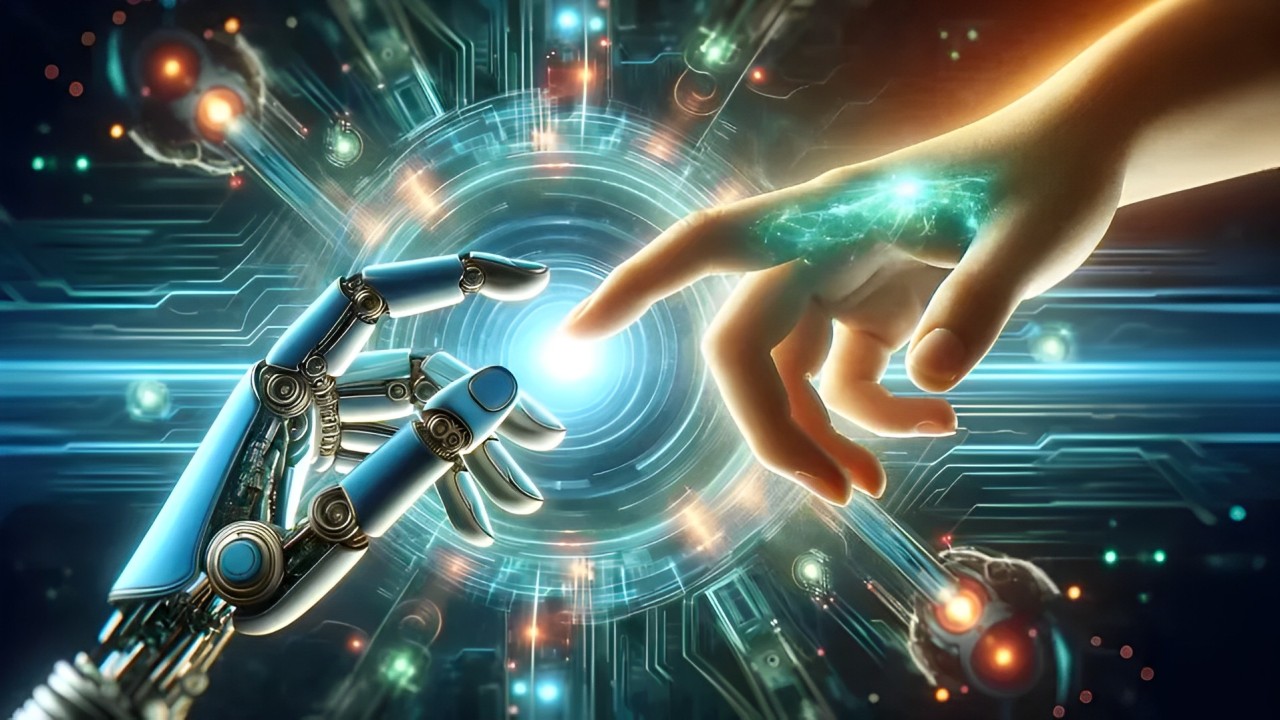How Artificial Intelligence is Revolutionizing Industries in India

How Artificial Intelligence is Revolutionizing Industries in India
India is not simply adopting artificial intelligence (AI); it is reshaping its socio-economic landscape with a distinctly innovative approach. As we edge closer to the 2030s, India is not only keeping up with the global AI wave but is actively leading it. Outpacing even some of the world’s most advanced nations, India is positioning itself as a global leader in everyday AI applications.
The novel use of AI across its varied sectors is capturing global attention, offering a model for unconventional and impactful technology use. This technological transformation, with its unique strategies and applications, is providing invaluable insights to the world. As AI becomes more deeply integrated into daily life and industries, India is not just a participant in the global AI revolution—it is at the forefront, steering toward a future where technology blends seamlessly with tradition to unlock immense potential.
India’s Strategic Demographic Advantage
India is well-positioned to dominate the AI domain, thanks to its large, youthful workforce, supportive government policies, and significant infrastructure investments. With a population nearing 1.4 billion and an average age of just 28, India represents both a massive market and a dynamic, adaptable labor force. While linguistic diversity and literacy challenges exist, India's multilingual population provides both hurdles and opportunities.
The widespread demand for essential services among the country's diverse demographic, combined with high aspirations and technological readiness, creates an environment where AI can overcome conventional obstacles. For those interested in studying AI and contributing to this transformation, artificial intelligence engineering colleges in Mumbai offer cutting-edge programs, preparing students to meet the future needs of AI-powered industries.
Leveraging AI, India is enhancing access to services and bridging gaps in areas such as bureaucracy and education. This not only strengthens India’s position as a global alternative to China in manufacturing but also highlights its leadership in using AI to uplift the socio-economic conditions of its vast and youthful population.
The AI-Driven Transformation of the Workforce
The rise of AI and data analytics is not merely a trend; it’s a catalyst reshaping how human resources are managed, productivity is optimized, and safety is maintained. Traditional methods rooted in instinct are now being replaced by AI’s ability to analyze vast amounts of data. Imagine being able to forecast workforce needs, refine recruitment processes with pinpoint accuracy, and even prevent accidents before they happen—this is the transformative power of AI.
For those looking to specialize in these areas, data science colleges in Mumbai are leading the charge in developing future professionals, offering in-depth programs in AI and data science. As India’s labor sector embraces AI-driven innovation, the landscape of talent management, recruitment, and safety protocols is on the brink of a major overhaul.
AI and Robotics in India's Industrial Revolution
India’s industrial landscape is rapidly evolving, with AI and robotics driving transformative changes in process and factory automation. As the country aims to cement its position as a global manufacturing hub, these technologies have become essential. The upcoming Automation Expo 2024 will further highlight this ongoing shift, which is already reshaping sectors across the board. This blog explores how AI and robotics are revolutionizing India's process automation and factory operations, ushering in a new era of efficiency, productivity, and innovation.
A New Industrial Era Dawns
India’s industrial sector is witnessing a major shift from labor-intensive practices to technology- driven processes, with AI and robotics emerging as the key enablers of this change. These technologies are transforming production lines, quality control, inventory management, and overall operational efficiency. AI-driven robots in factories go beyond mere automation; they are introducing smarter, more adaptable processes that continuously learn and evolve to optimize performance.
The Impact of AI on Process Automation
Process automation involves utilizing technology to perform routine tasks with minimal human intervention. AI amplifies this by analyzing massive data sets to extract insights, predict outcomes, and make informed decisions. For example, in the pharmaceutical industry, AI can predict equipment maintenance needs, ensuring seamless production without unplanned interruptions. Similarly, in the food and beverage industry, AI helps to fine-tune production parameters in real-time, ensuring consistent quality, reducing waste, and improving efficiency.
Meanwhile, robotics brings tangible automation to life. Although robots have been part of manufacturing for some time, the integration of AI has made them more versatile. These AI- enhanced robots can handle a variety of tasks—from precision assembly to material handling and packaging—with greater speed and accuracy than human workers. Additionally, they can now learn and adapt to new tasks, making them indispensable in industries where product specifications frequently change.
Factory Automation: Paving the Way for Future Industries
Factory automation entails the use of automated systems and robotics in various manufacturing stages. In India, where manufacturing significantly contributes to GDP, AI and robotics-powered factory automation is set to drive growth and enhance global competitiveness. Smart factories equipped with AI, IoT devices, and advanced analytics are redefining benchmarks for productivity, safety, and sustainability.
A key area where AI and robotics shine is in streamlining supply chain logistics. Automated warehousing and inventory management systems track and retrieve materials more efficiently,reducing lead times and boosting throughput. Additionally, AI-driven predictive maintenance minimizes equipment downtime, ensuring that production runs smoothly and continuously.